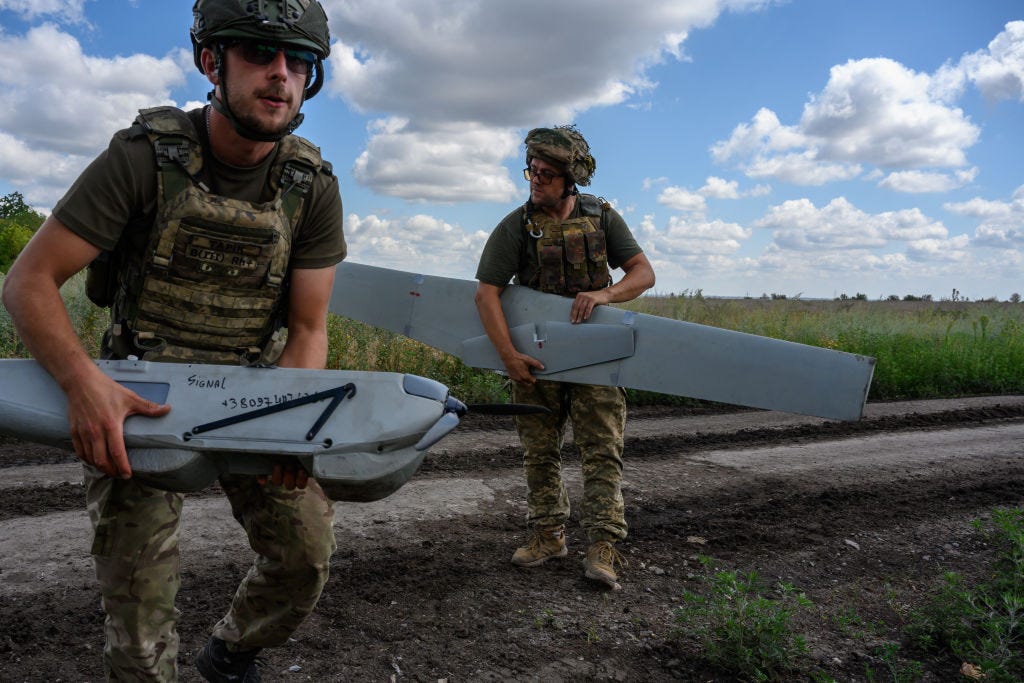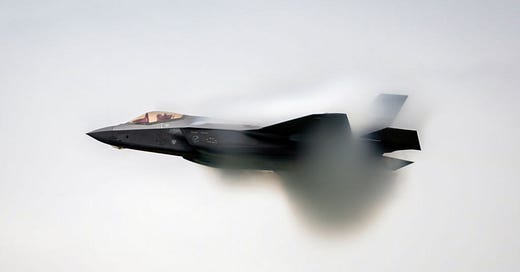
The Free Press

Two years ago, I was invited to lunch in Washington with Gilman Louie, a tech venture capitalist. He was in town to discuss the passage of the CHIPS Act, a $53 billion reinvestment in America’s semiconductor supply chain. Gilman believed that the offshoring of tech manufacturing was a dire national security issue. His concerns were many—from the vulnerability of Taiwan’s chip industry to China’s navy having surpassed the size of our own. If we ever had to fight World War III, the U.S. wouldn’t be ready.
Although I shared Gilman’s concerns, I told him that I wasn’t quite as worried as him. I repeated an argument I’d often heard from national security professionals, which was that the United States retained the upper hand against any potential adversary because the truly exquisite technology—from the iPhone to the chips developed by NVIDIA to the breakthroughs at OpenAI—didn’t occur in China, or Russia, but right here at home. No adversary could compete with us in the creation of exquisite technology.
Gilman listened patiently. Then he asked me a question. “In the Second World War, which nation produced the most exquisite technology? Because it wasn’t the United States.”
It was Germany, as Gilman reminded me.
Back then, American Sherman tanks—nicknamed “flaming coffins” by GIs—proved no match in a one-on-one contest with their German counterpart, the Tiger tank. Both the fighter jet and the long-range ballistic missile, innovations that came late in the war, weren’t creations of the Allies, but of Germany. With the notable exception of the atom bomb, the Germans were consistently the first to field what was then considered exquisite technology. The problem for the Germans was that they lacked industrial capacity. The Allies defeated the Axis with inferior technology that could be mass produced.
Today, the United States finds itself in the position of the Germans. We have divested ourselves of much of our industrial capacity. China, meanwhile, with 35 percent of the world’s global manufacturing output, finds itself in the position that allowed the United States to win the Second World War. With wars being fought in Europe and the Middle East, and continued Chinese aggression in the South China Sea, it’s hard to understate our vulnerability.
Over the past thirty years, technological dominance has allowed the United States to wage relatively bloodless wars. But the limited scope of those wars never tested our industrial capacity. The nature of war is changing, however. Our diminished industrial capacity comes at a time when the modern battlefield is demonstrating the limitations of high-end, legacy technologies. We’re seeing this in Ukraine.
For example, over the past two years, the Ukrainian government has petitioned the United States to equip it with M1 Abrams tanks, arguably the most technologically advanced tank in existence; each costs $10 million and requires $2 million in annual maintenance. This past September, those Abrams—31 one of them—arrived in Ukraine with much fanfare. Some speculated that the arrival of the tanks could even shift the balance of the war. But now, only 20 of those Abrams survive and they have mostly been pulled off the front lines due to their ineffectiveness. The most recent Abrams was destroyed by a Russian drone, a platform that typically costs in the low four figures.

Early last month, I visited a drone unit within Ukraine’s 92nd Assault Brigade. Positioned outside of Kharkiv, they boasted an array of drones. These included long-range reconnaissance drones to the first-person-view lethal drones used to attack Russian personnel and armor. These drones were made of everything from hard plastic to balsa wood to heavy construction paper. Most were modified in the field, particularly the lethal drones, which the Ukrainians equipped with a warhead. This past year, Ukraine has expended 10,000 lethal drones. The most used platform is the Mavic 3, an off-the-shelf drone that costs $2,999 on Amazon and is made by DJI—a Chinese company.
Ukrainian field commanders understand the dangers of relying on a Chinese company to provide them with one of their most essential pieces of equipment. Yet they have few alternatives. The equivalent lethal U.S. drone, the Switchblade, has a production cost of between $60,000 to $80,000 and remains in short supply, with only 700 having been delivered to Ukraine. This past May, a bipartisan group from Congress grew so concerned they sent a letter to Secretary of Defense Lloyd Austin. It read, in part: “. . . we strongly encourage you to include the delivery of small, American-made drones, which are essential for tactical success on the battlefield.” Six months later, these American-made drones have yet to arrive in Ukraine.
Fast execution isn’t impossible. In the Second World War, when the United States needed a long-range fighter escort to support its strategic bombing campaign in Europe, it designed and fielded the P-51 Mustang. This iconic fighter became a mainstay of U.S. airpower and remained in service for decades. From its first design to prototype, the P-51 was produced in 102 days. The United States went on to produce 15,000 by the end of the war.
So how do we do business today?
The most recent fighter produced by the United States, the F-35—which, by all accounts, is an exquisite piece of technology—took twenty years to develop. It comes with a price tag of $100 million per jet. Compare that to the cost of a P-51, which, when adjusted for inflation, would cost $675,000 today.
Exquisite technologies are effective in limited wars. They’re less effective in a total war like those being fought in Ukraine and Israel. Unlike a limited war, a total war is existential for its participants. You either win or you cease to exist. Every national resource is marshaled for the prosecution of the war. The United States hasn’t fought this way since the Second World War. Our defense industry is currently built to fight limited wars, in which the scope of the conflict remains contained and we fight a nonpeer-level adversary that is easily overwhelmed by exquisite technologies. This slows the pace of innovation because our adversary has minimal capacity to field new weapons that we must counter.
Innovation is a blade that cuts both ways. In the Black Sea, the Ukrainians have leveraged low-cost technology against the Russians, logging a remarkable string of victories without precedent in the history of naval warfare. A combination of armed surface drones and ballistic missiles have allowed Ukraine to sink or damage nearly half of Russia’s Black Sea Fleet, denying Russia access to Ukraine’s southern coast. The Battle of the Black Sea is historically significant because it’s the first time that a country with virtually no navy has won a naval battle.
In the future, it’s easy to imagine how a nation with essentially no air force might win an air battle, and how one with effectively no army might win a land battle. An axis of nations—China, Iran, Russia, and North Korea—have marshaled their collective resources to prosecute multiple wars around the globe. In Ukraine, Russian soldiers fly Iranian-supplied Shahed drones and fire North Korean artillery shells. In the Middle East, Iran has signed an economic cooperation agreement with China, in which Beijing will invest $400 billion in Iran’s economy over the next 25 years in exchange for heavily discounted oil. These aren’t idle preparations.
If the United States has to fight a war against a peer-level adversary, quality of systems will matter—but so will quantity, and we have discounted quantity for too long. If we fail to reinvest in our military industrial base, and if we continue to rely on a sclerotic, bloated defense acquisition system, we will be unprepared. We will be the Germany of the Third World War.
Elliot Ackerman is a retired Marine who was awarded the Silver Star, the Bronze Star with Valor, and a Purple Heart during his five deployments to Afghanistan and Iraq. Read his piece, “In Trump, I See a Combat Leader.”
And to support more of our work, become a Free Press subscriber today:















When we listen to the warfighters and engineers versus those who don't fight and those who can't engineer we'll be ready to win the next war.
The military-industrial (and political) complex has fossilized our capacity to develop and field weapon systems. Since preparing for war is one of the President's primary duties, the next (2-3) Presidents must prioritize being prepared for war, as Reagan-esque as possible.
Here is how you fight the next war.
<a href="https://interestingengineering.com/culture/china-national-day-drone-show-break-world-record">China: 10,197 drones break world record in Shenzhen Bay light show</a>